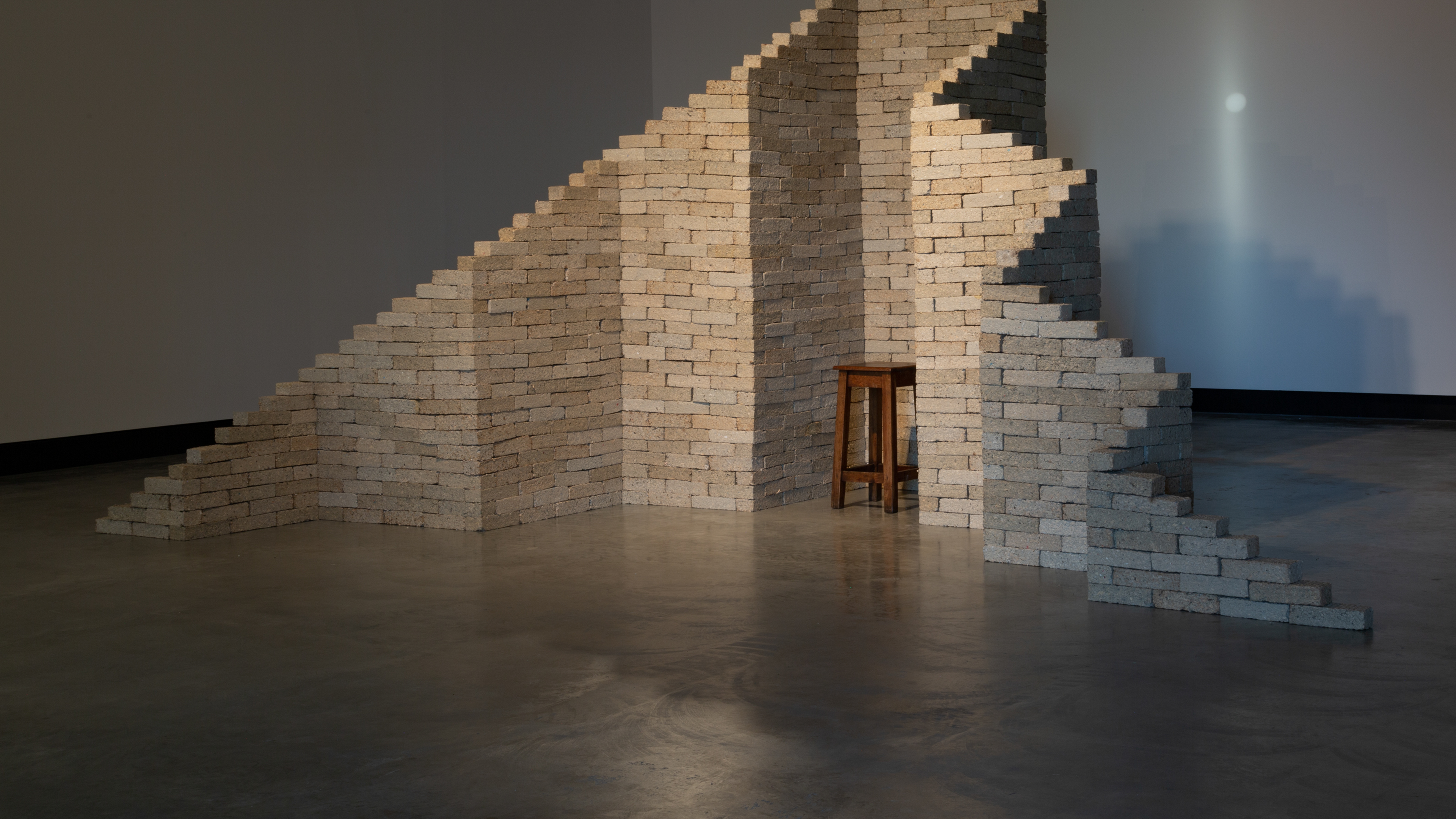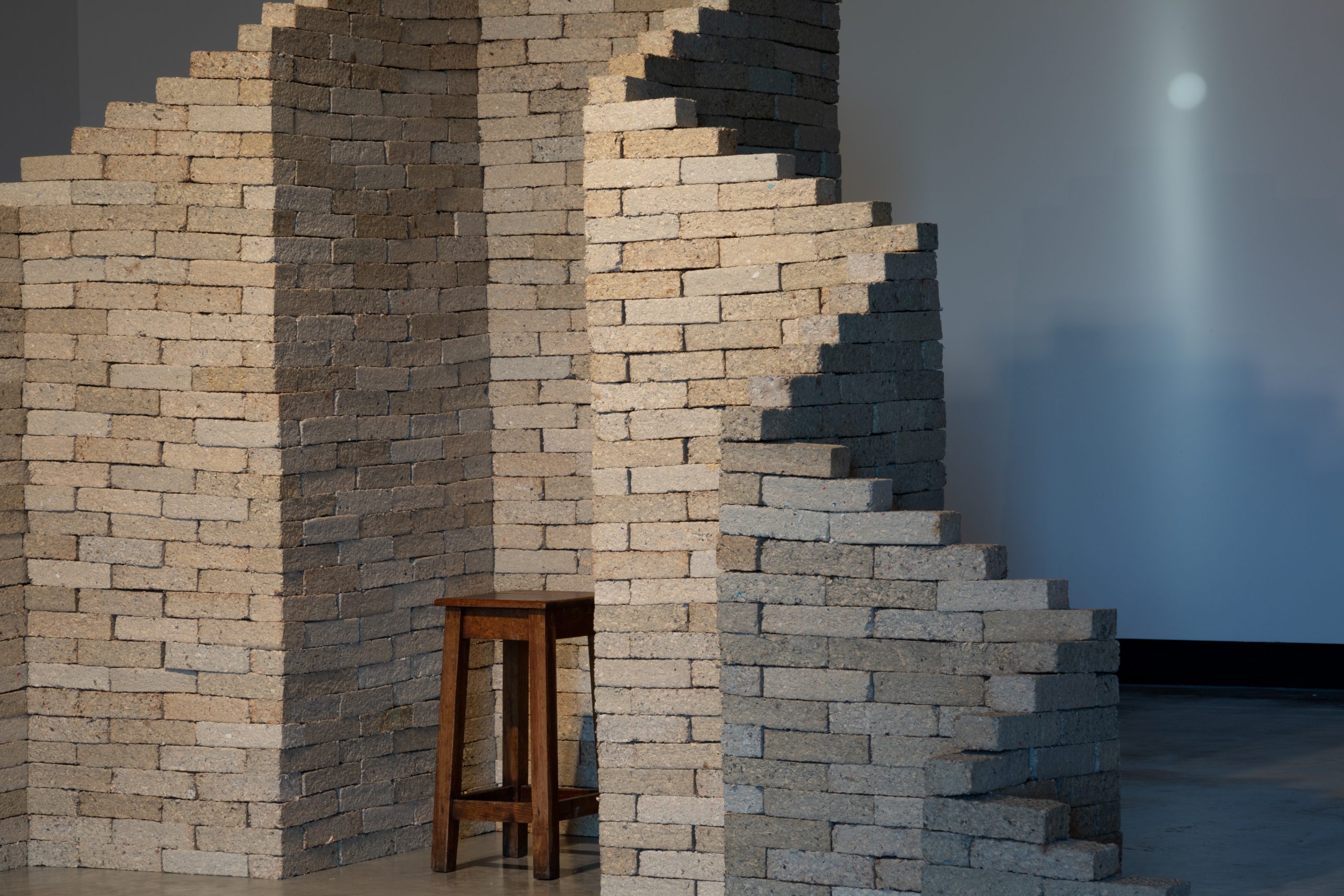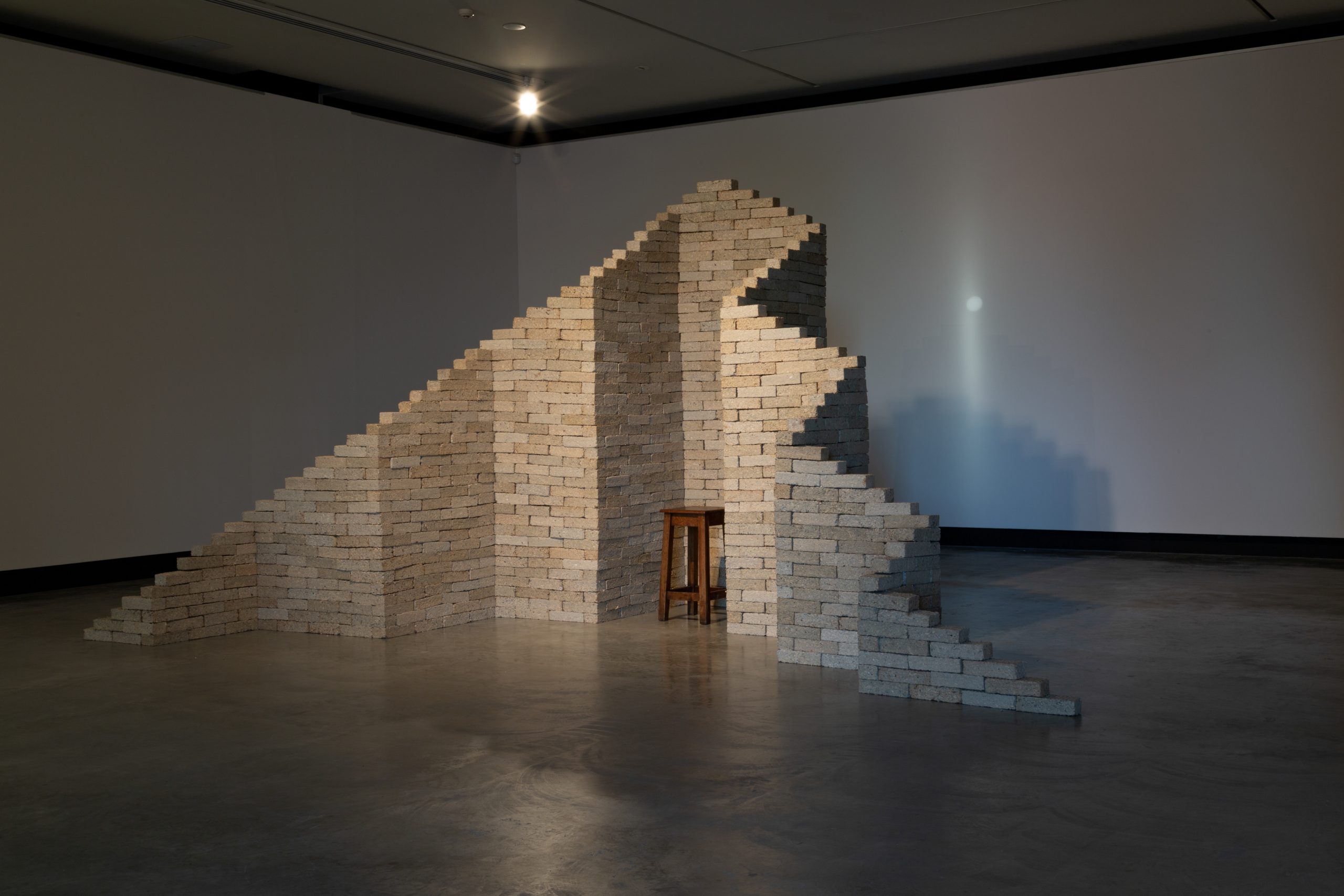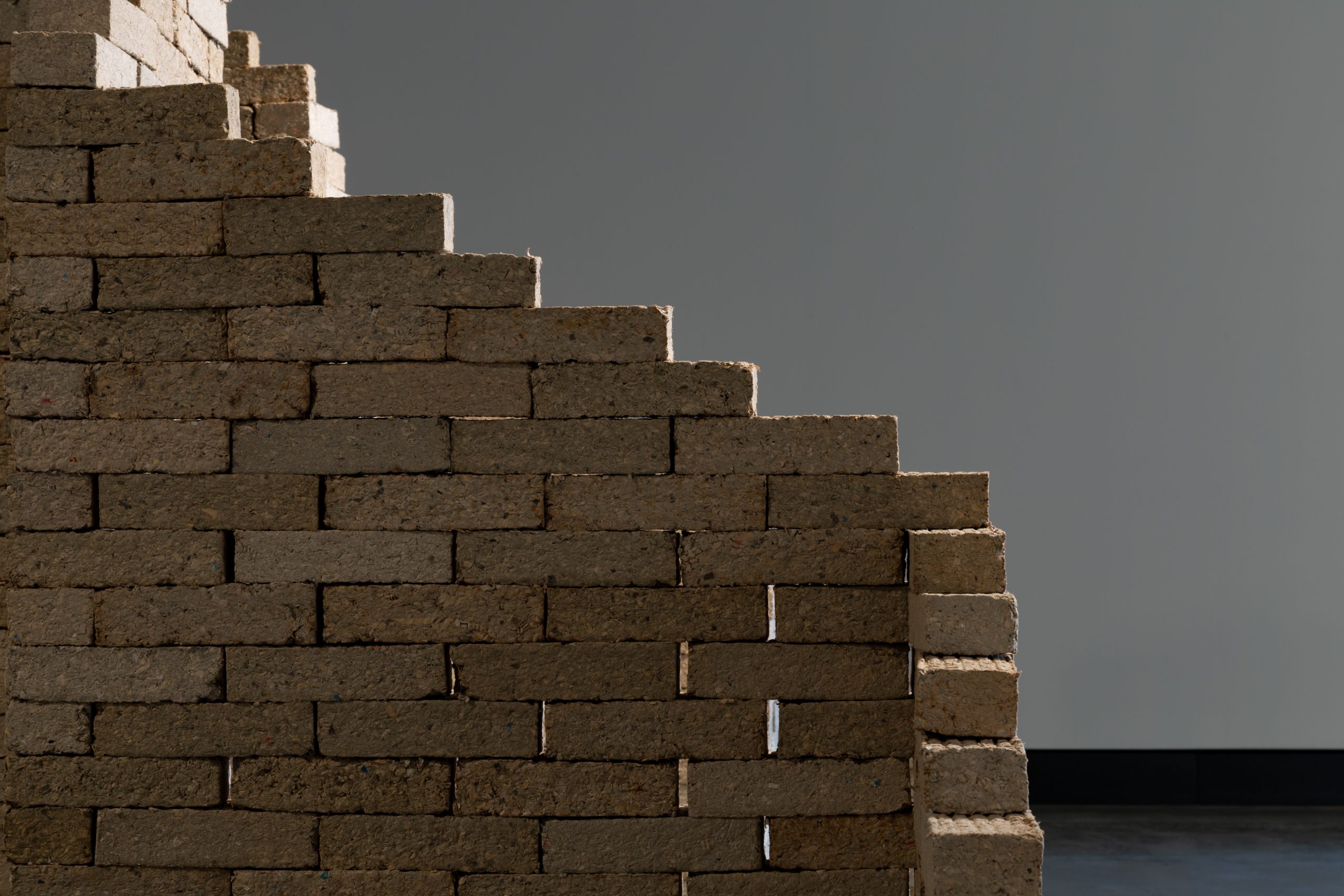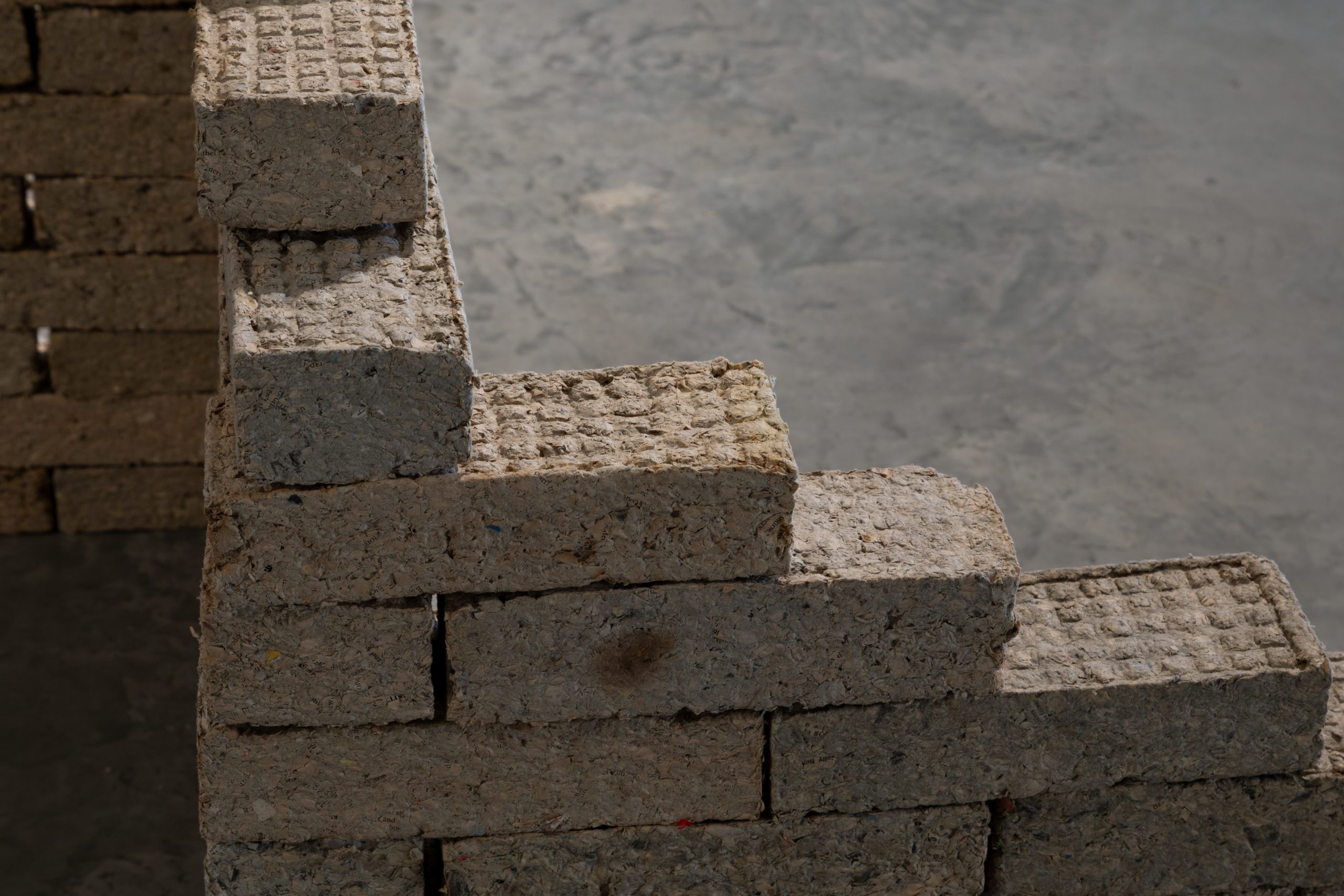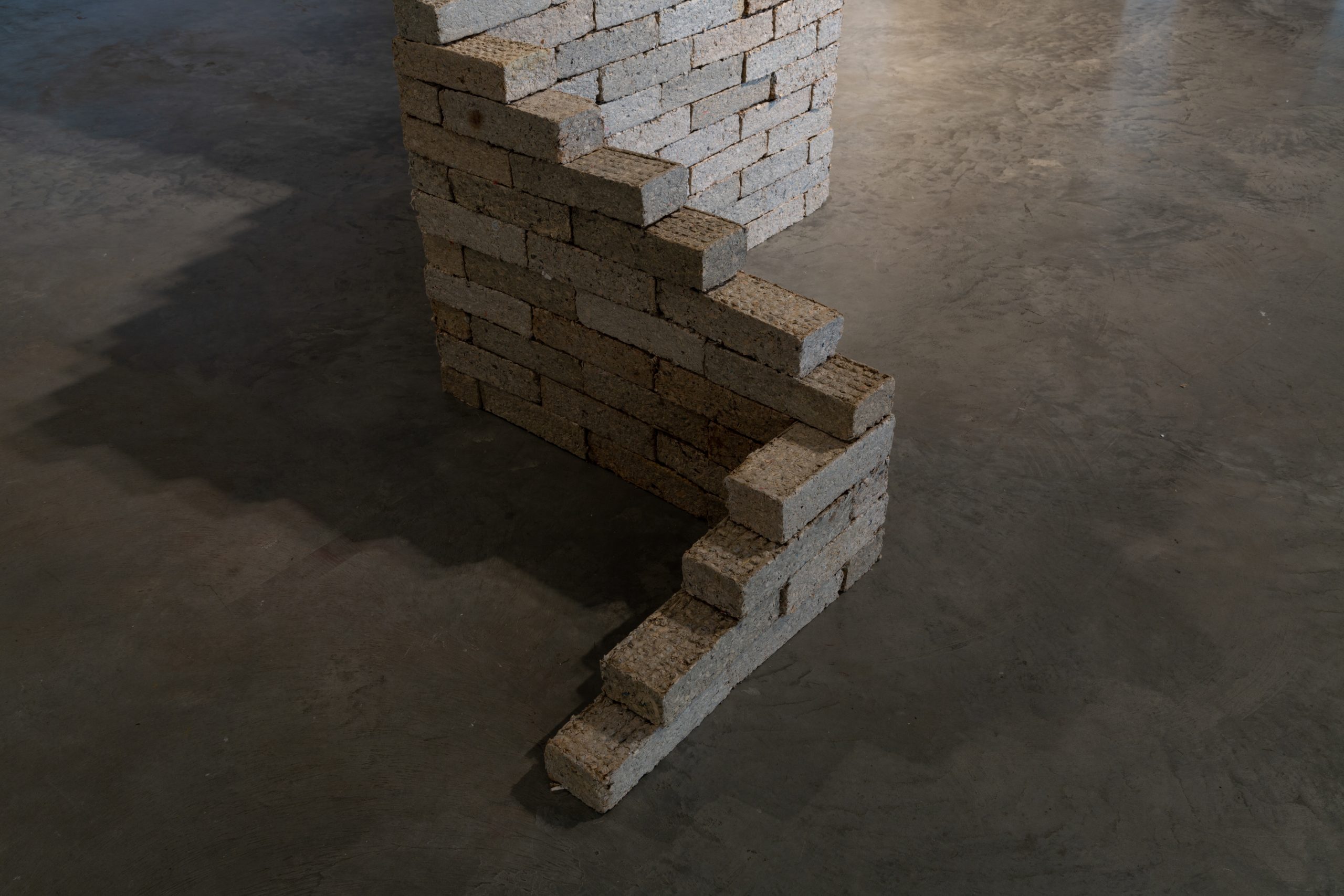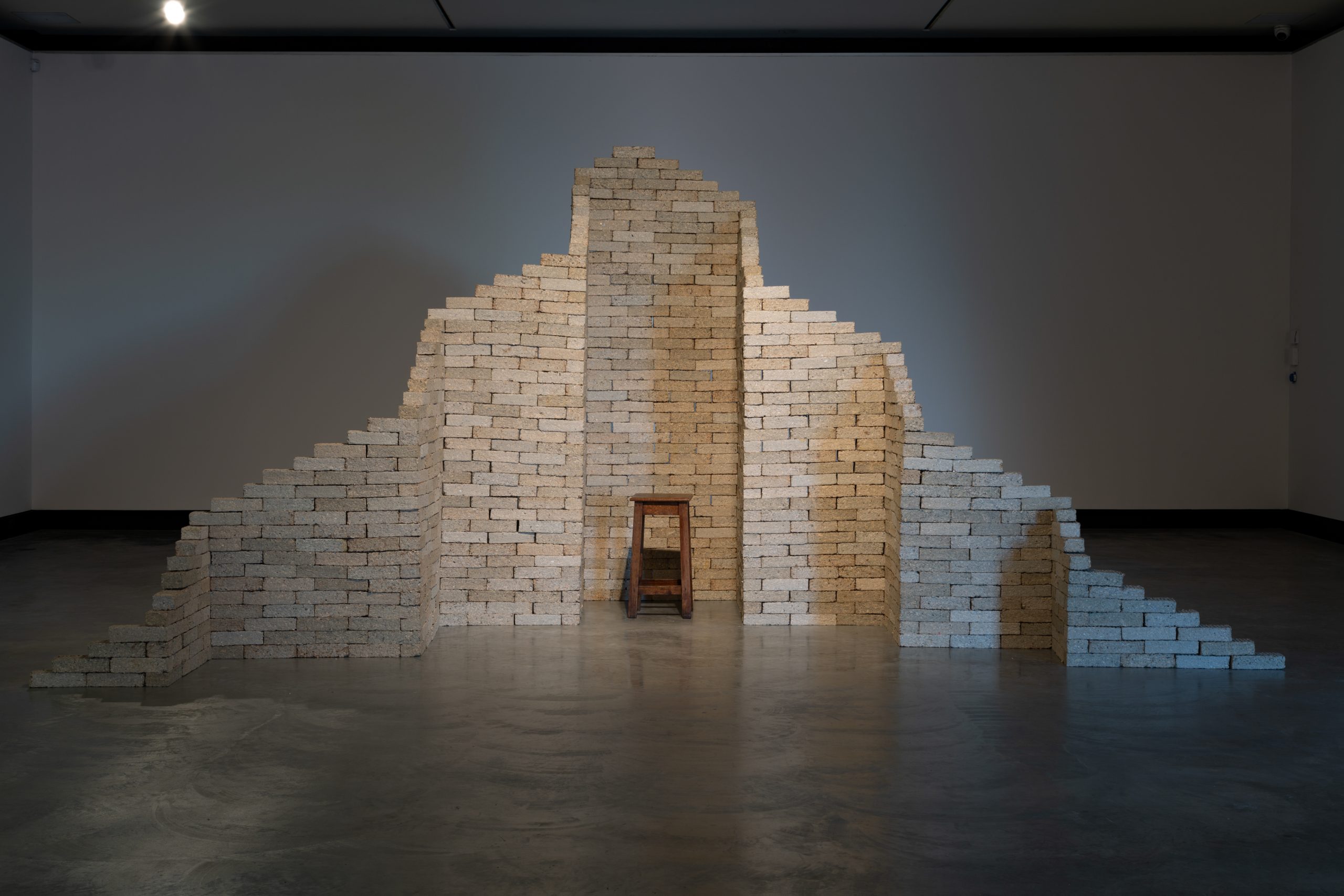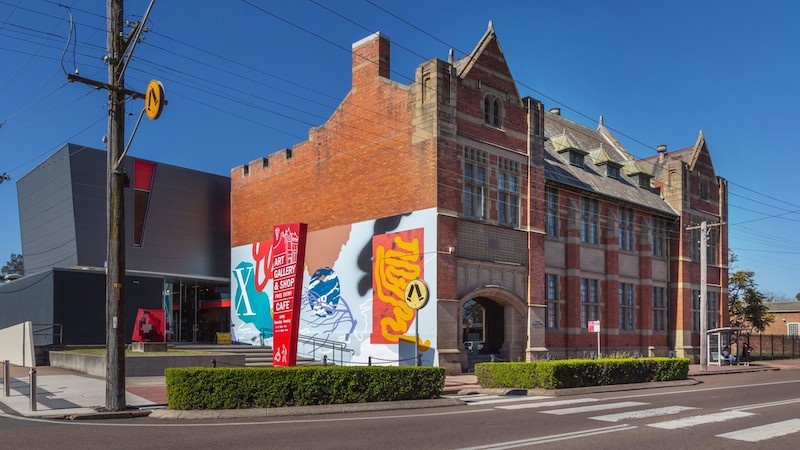Constructing the Fig Tree
Form and Concept in the Art of Derek Kreckler
One thousand bricks. Each one is made from pulped newspaper, sourced from a recycling centre in Balmain. The accumulated bricks represent the average amount of newspapers that were delivered to a Sydney household per month at the time. Placed at the centre is a stool used by models in art classes – a historical and practical addition so one could sit without a chair obscuring their form. The bricks sprawl out, gesturing towards the roots of a fig tree.
How to discipline a tree (1989) is an artwork which is amidst eras: between Modernism and Postmodernism, analogue and digital, and the ongoing emergence of climate change as a global issue. In this artwork, Derek Kreckler (1952-) draws knowledge and understanding from form above all else. This was done intentionally to try and draw meaning from a source outside of himself, one beyond his own experience and perspective, so that the result might gesture towards a shared reality. This is most exemplified by the bricks themselves.
Paper, an abstraction of the trees from which they are sourced, is imprinted with ink which then communicates daily, disposable news. Kreckler took these materials and reprocessed them again, creating physical pixels and placing them in the shape of a tree. Sitting amidst these bricks, one experiences the original tree in a new form. Kreckler notes that since making the bricks they have completely dried out. What once created a damp, soothing silence – not dissimilar to that experienced when sitting beneath a large tree – now only continues to degrade.
By allowing form to lead the creation of the work, Kreckler avoids an artwork which is personal, moralising, or admonishing. Rather, it becomes an object which is environmentalist in concept and function. It is an eerily relevant symbol thirty-three years after its making.


